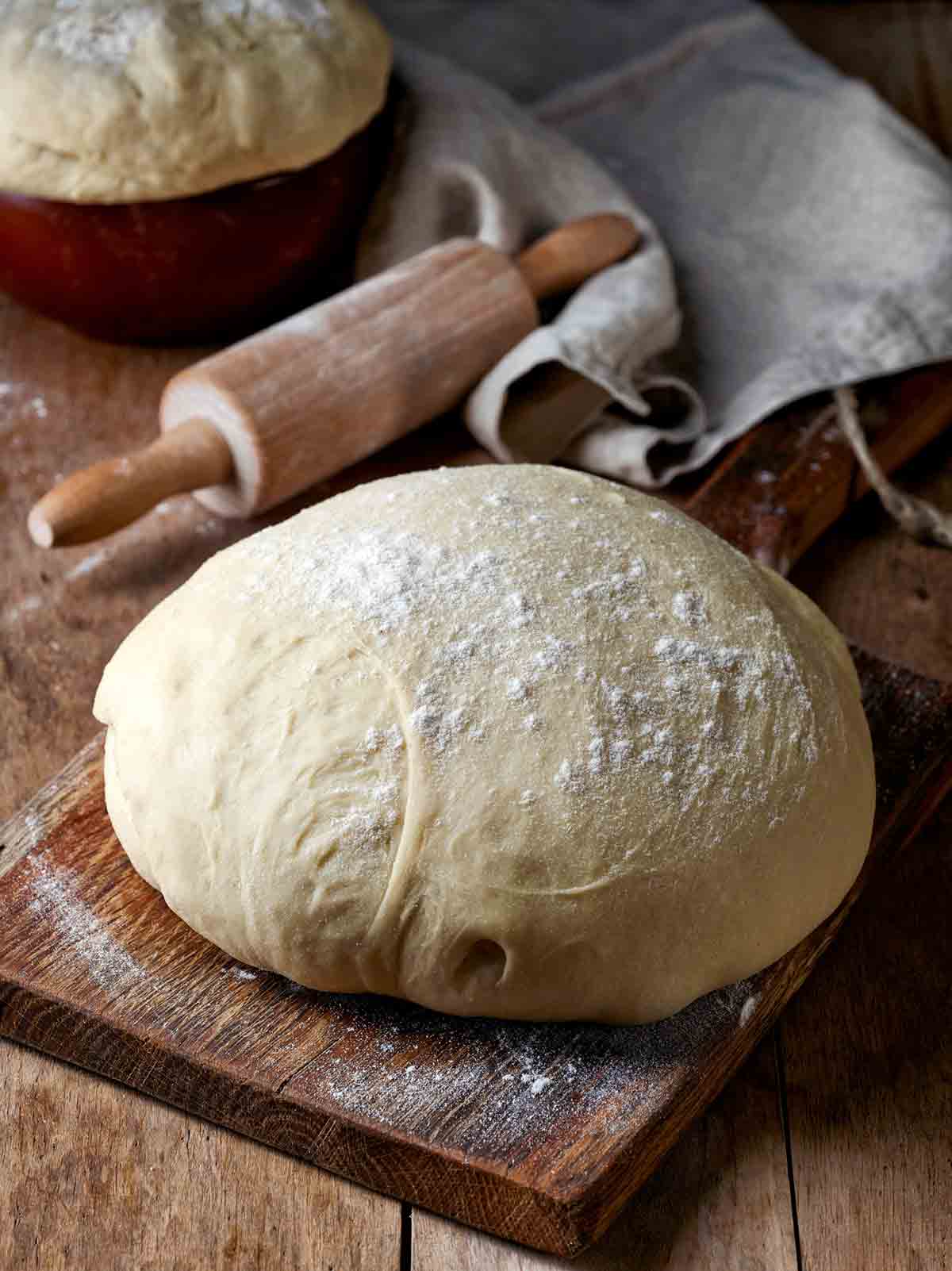
You could say to hell with it and slip it in the oven and take a gamble. Or you could do one simple, surefire check: the poke test.
The poke test is the easiest and most reliable way to tell whether shaped and rested dough is ready to be baked.
And how do you do the poke test, you ask? Well, just as it sounds. Lightly flour or oil your finger and give the dough a firm but gentle poke. Make believe you’re pressing the doorbell of your annoying neighbor. If the dough springs back quickly, that’s its way of pushing back and saying, “Back off, neighbor!” In that case, let it rise for a bit more time.
On the other hand, if the dough springs back languorously, and your poke leaves a small indent, your dough’s ready to face its maker.
Why the poke test works
You want to slip the dough into the oven at the peak of yeast activity–when the dough has risen fully. As the yeast meet their inferno fate, they partake in one last all-you-can eat free-for-all, causing the dough to expand even more. That’s the oven spring you see as you watch transfixed through the oven window.
If you poked your dough and it sprang back, that’s proof that the yeast is still busy producing gas (let’s be honest, farting), and hasn’t reached its limit. The bubbles in the dough fill back with gas. But when the dough is sluggish to rebound and your poke leaves an indentation, that’s an indication not much gas is being produced.
Poke early, poke often
Be a noodge. Poke early and often. It’s better to check the dough sooner rather than later. If you wait too long to administer the poke test, the dough might not spring back at all. That’s a sign that it’s over-proofed. The dough has most likely risen too much and will collapse in the oven. It’s happened to us all.
Lastly, keep in mind that every recipe and every loaf is unique. (No, I’m not getting all kumbaya here.) The time it takes for your dough to rise depends on several factors–ambient room temperature, water temperature, whether the dough is enriched with fat (such as in a buttery brioche), and maybe even a little bit of baking fairy dust.









